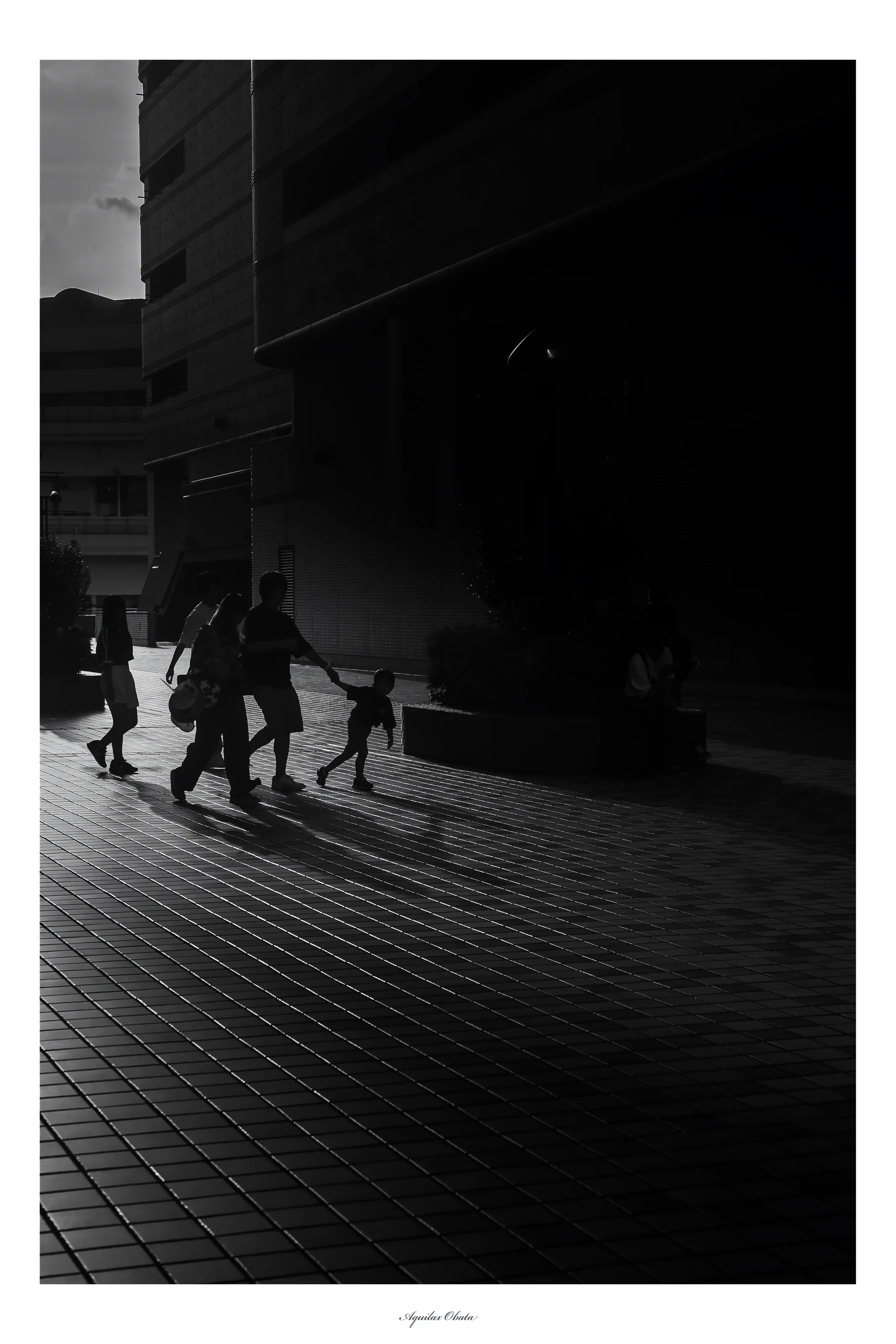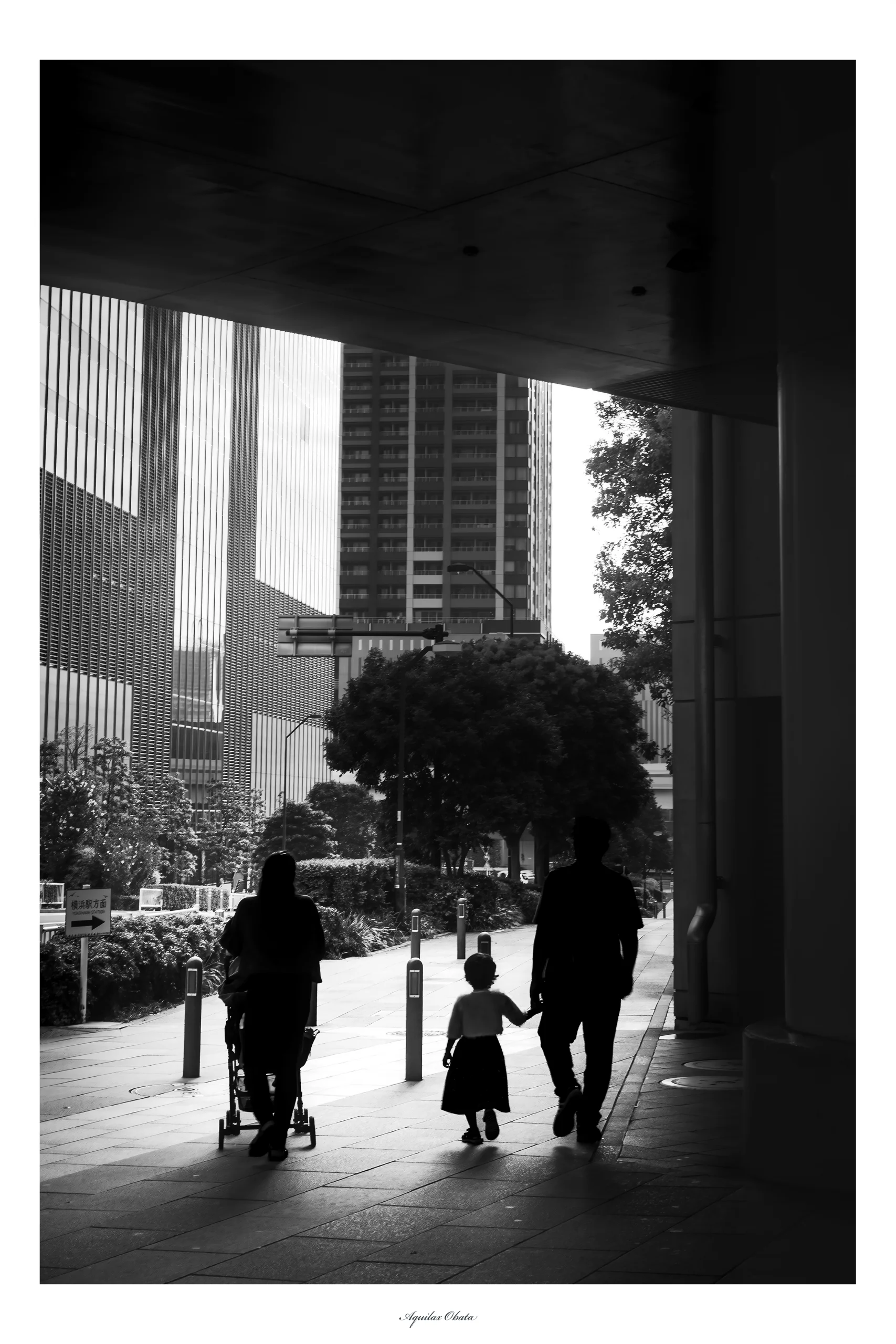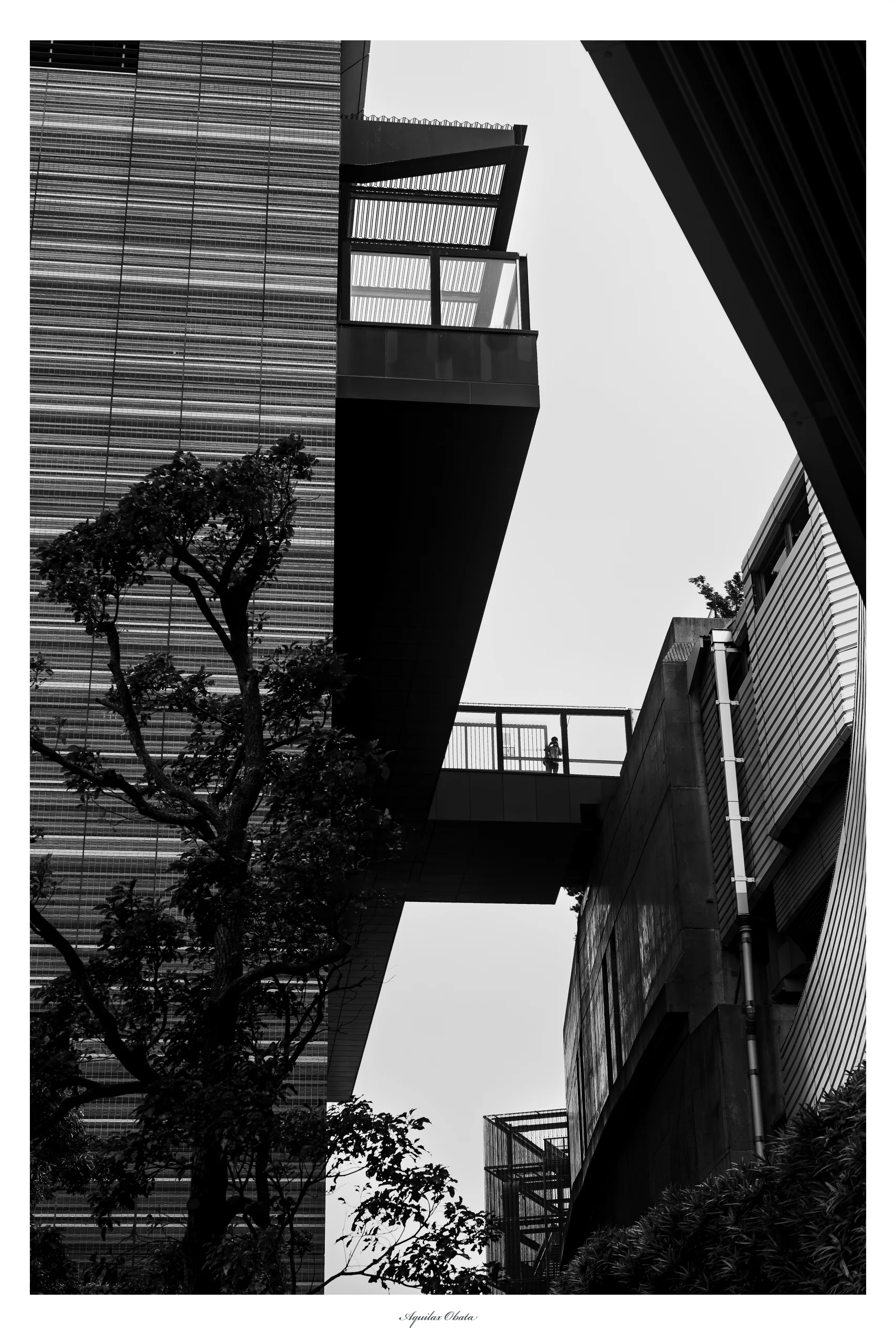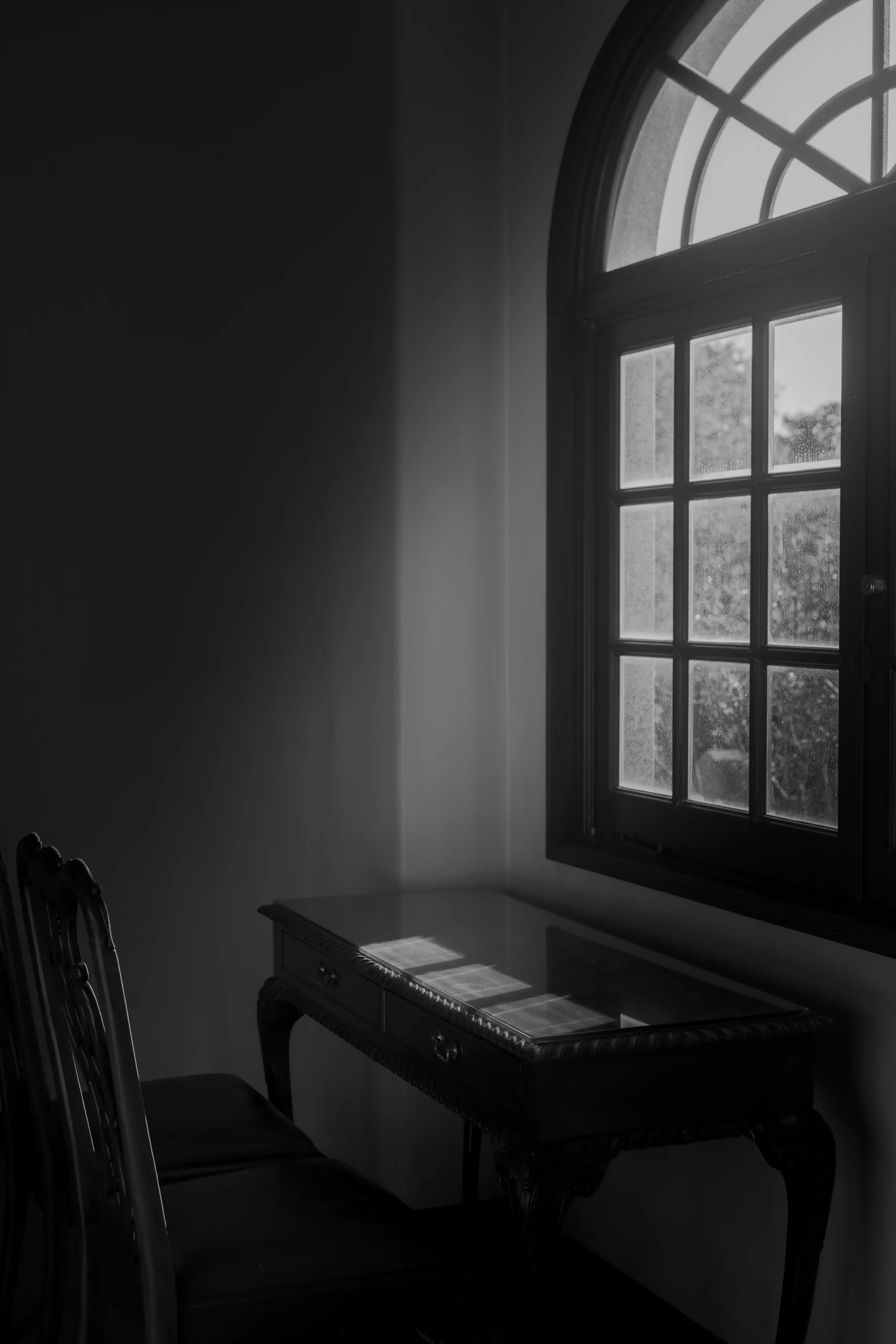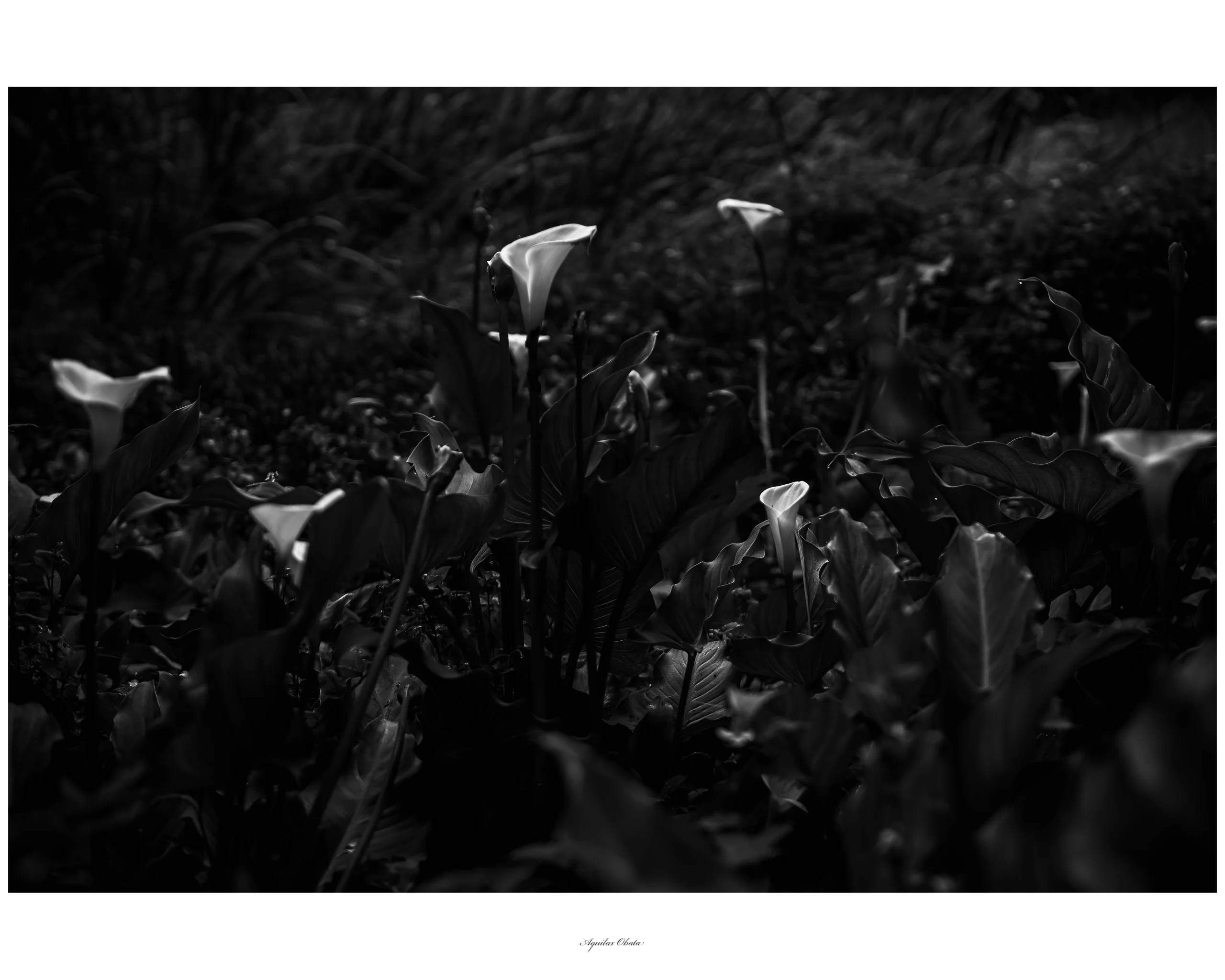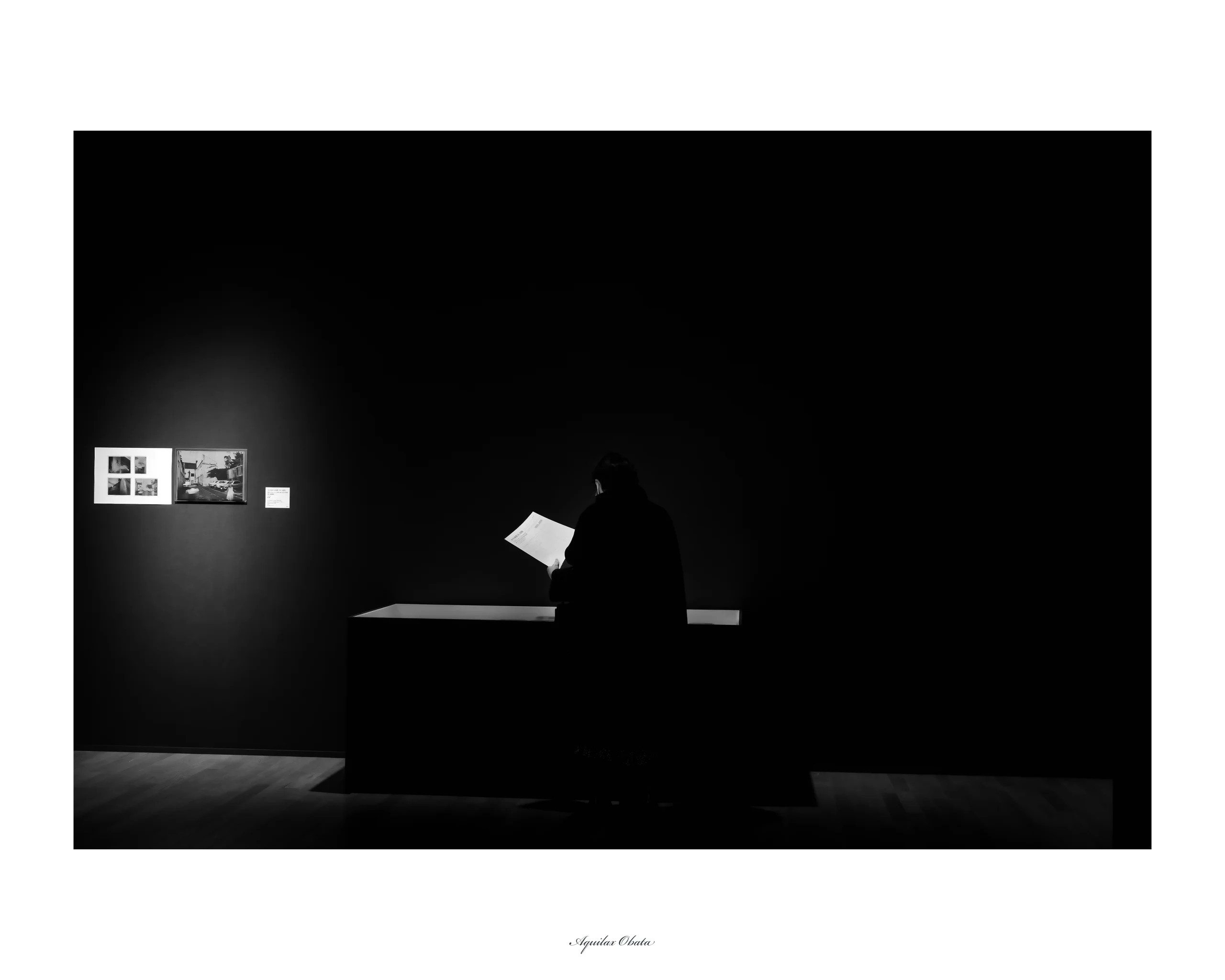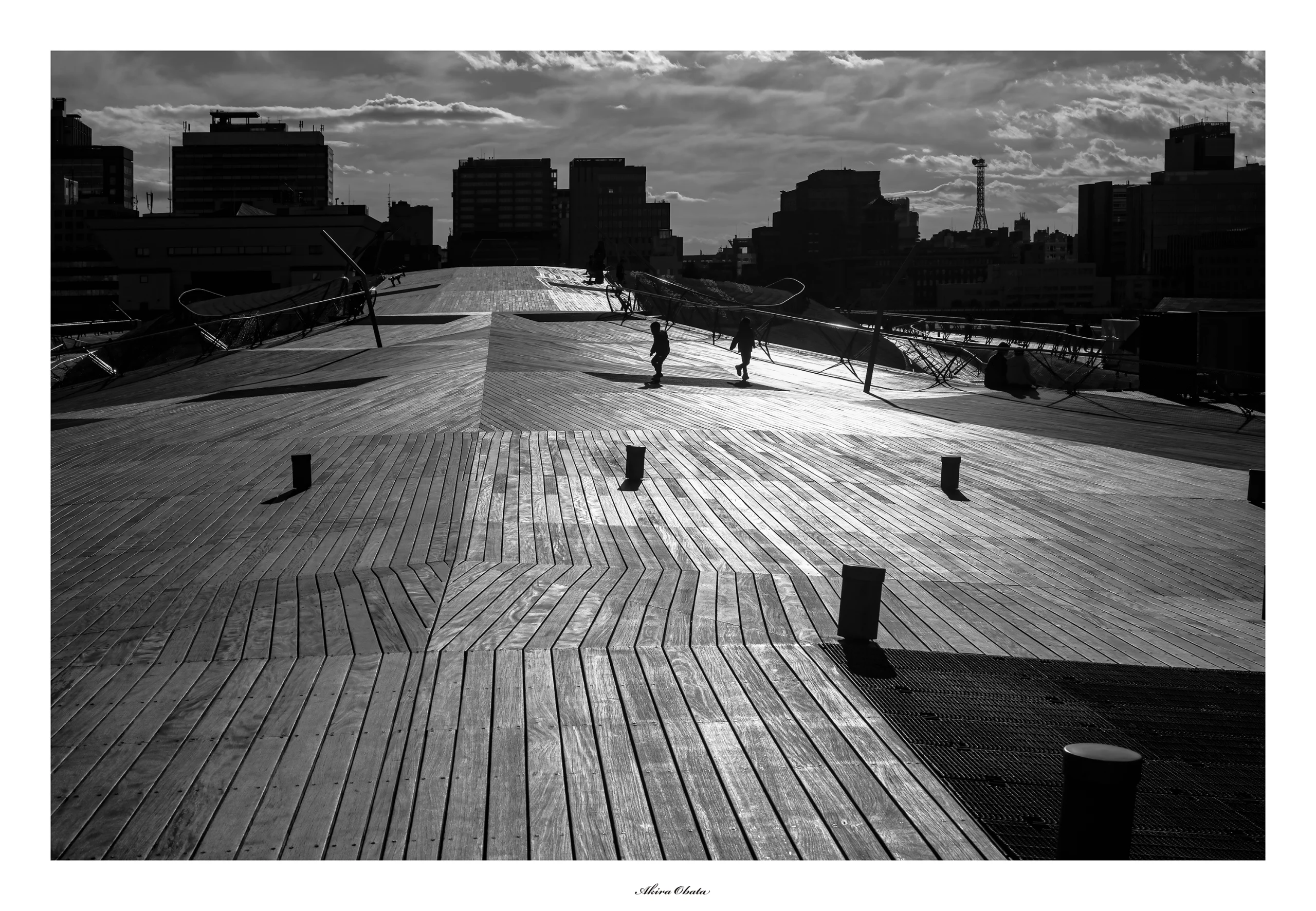INDEX
Introduction
Black and White Photography Captures the Soul.
“Monochrome photography captures the soul.”
This phrase is said to have been proposed by the photographer Henri Cartier-Bresson in the 1930s.
Cartier-Bresson believed that monochrome photography could capture the essence and inner nature of the subject, which is why he expressed it as “monochrome photography captures the soul.” He referred to capturing moments as the “decisive moment” and emphasized the importance of expressing such significant moments in monochrome.
My Origins in Monochrome Photography.
Cartier-Bresson’s words have become widely known in the photography world as a succinct expression of the unique expressiveness and charm of monochrome photography.
I believe this phrase continues to live on as an important expression reflecting the creativity and philosophy of photographers pursuing monochrome expression.
Encountering this phrase and the creatively rich thoughts embodied in Cartier-Bresson’s works has also become the origin of my life as a photographer.
The Allure of Monochrome Photography
Capturing the beauty of light and shadow in a single tone
Monochrome photography is an artistic expression that uses shades of gray instead of color.
By capturing the beauty of light and shadow in a single color, it imprints the viewer’s consciousness with the subject’s shape, texture, and emotion, creating a dramatic and timeless effect. In other words, by removing color, the essential elements of the scene can be highlighted and the focus can be narrowed down.
By changing the camera settings to alter contrast and tone range, and utilizing the dynamic range from pure white to pure black, it provides the viewer with a striking visual impact. Depending on the lighting and subject, nostalgia, mystery, elegance, and dramatic expression can be achieved.
Capturing the inner world of the human being
By highlighting the contrast, texture, shape, and light of the subject, we can get closer to capturing the inner world of humans.
By simplifying and abstracting reality, or by simplifying specific aspects and emotions, we paradoxically approach a complex core.
However, this is by no means an easy task.
The reduction of color requires the imagination and creativity to integrate core elements such as light, shadow, form, and texture. I believe that when these elements and experiences create a chemical reaction, works that resonate with people’s hearts are born.
What I Aim to Express Through Monochrome Photography
Monochrome photography holds great potential as a means of artistic expression.
So, what should I convey? Next, I will think about this matter.
About Emotion and Interiority
The phrase “to capture the soul” suggests that monochrome photography has a unique ability to reveal the inner emotional life, feelings, and deeper psychological realities of the subject.
Photographers can use this medium to depict the more intimate and subtle aspects of human experience.
This is also true when moving away from human subjects to photograph buildings or corners of cities.
When photographing buildings or street corners that hold irreplaceable memories or experiences for the photographer, there is likely to be a particular attention to the angle of the shot and the time of day, unlike when photographing completely unknown buildings. In other words, the photographer is reflecting their own life through that building, transcending the flow of time.
Timeless Universality
Now, I used the phrase “beyond the flow of time.”
By eliminating color, the monochrome image transcends the specification of time and place, and it is even possible to create a sense that transcends eras.
The monochrome flashback expression often seen in movie end credits is an example of the effect of monochrome expression. The viewer reflects on a long story, touches upon the universal and archetypal elements of the work, and engraves the emotion more deeply in their mind.
Simplicity and Essence
Abstract Concept
Monochrome photography essentially expresses reality in shades of neutral gray. In other words, it is not a faithful reproduction of the world, but rather an abstract expression technique that simplifies different colors into varying tones of the same color.
What is important here is that by removing the distractions of color, the essence of the subject is revealed. I have only recently begun to understand the meaning of capturing the essence of the subject.
Details and the Whole
To draw out the essence of the subject, pay close attention to basic shapes, textures, and overall structure. This is an important condition.
However, attention often shifts to shapes, textures, and detailed elements.
For example, urban areas are filled with concrete, glass, and many people. Depending on the perspective, urban areas can seem to be filled with elements that lack individuality.
But is that really the case?
Upon closer inspection, every element of the reality we can call ♾️ is overflowing with individuality.
However, if we focus too much on those details, we may lose sight of the clear overall picture. The external world surpasses the chaos within the photographer and reveals itself to be far richer and more dynamic.
Discernment
How to harmonize and simplify the essence of these opposing elements of detail and the whole picture?
How to assert within a limited frame (finder) by subtracting from the components of the real world?
I want to grasp the essence through simplification. A momentary act connects to the act of “pressing the shutter” as an instinctive yet calm judgment.
I believe it is necessary to discern whether an image can be fixed by light and shadow, by white and black.
The Courage of Subtraction
If the relationship is extremely close, it may be possible to share the chaos that each person harbors within.
However, daily life shared with chaos is likely to become a burden over time. What I mean to say is that photographic expressions that push out one’s inner world may attract passionate fans, but it becomes difficult to gain long-term empathy.
The viewer becomes fatigued by the murky world of personal novels. To put it bluntly, this becomes a world of addition. The earlier mentioned collection of details can also be replaced with this concept of addition.
For example, whether to capture a wide view of the sunset or to capture a long shadow at one’s feet. From the perspective of light and shadow – monochrome expression, I would unhesitatingly point the lens towards the latter.
The chaos of the inner world is prone to expression as addition.
Clarifying the subject of the scene before us as much as possible, sharpening the edges, and simply overwriting with light and shadow. Learning from the surrealistic aesthetics seen in the paintings of Giorgio de Chirico may indeed be what constitutes work as monochrome photography.
Conclusion
Artistry and Poetics
I have expressed some thoughts on the essence of monochrome photography.
When I summarize them, I believe and hope that monochrome photography can be utilized not just as a mere record, but as a medium for a more poetic and artistic exploration based on human experience.
Generally, the aesthetics of monochrome do not merely remain as physical expressions. It seems to me that they are well-suited to convey the human trait of being moved.
I wonder if photographers are engaging with the aesthetics of monochrome as a means to ponder what it means to be human and to evoke deeper truths.
My works
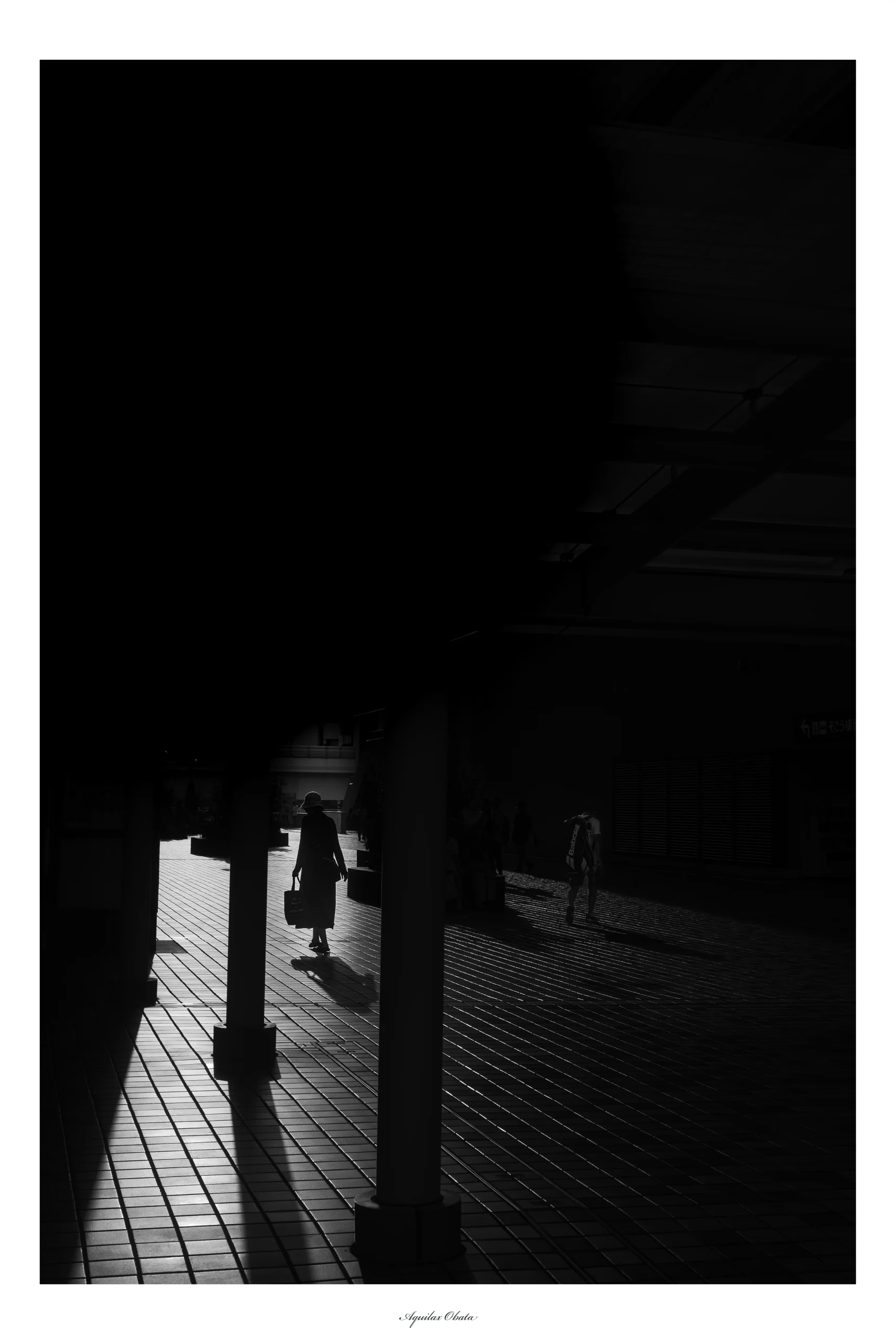
3,Sep. 2024
[Equipment]
📷LUMIX-DC-S1 + LUMIX-S-PRO, 1:1.4/50mm, SS:1/320,f11,ISO:100
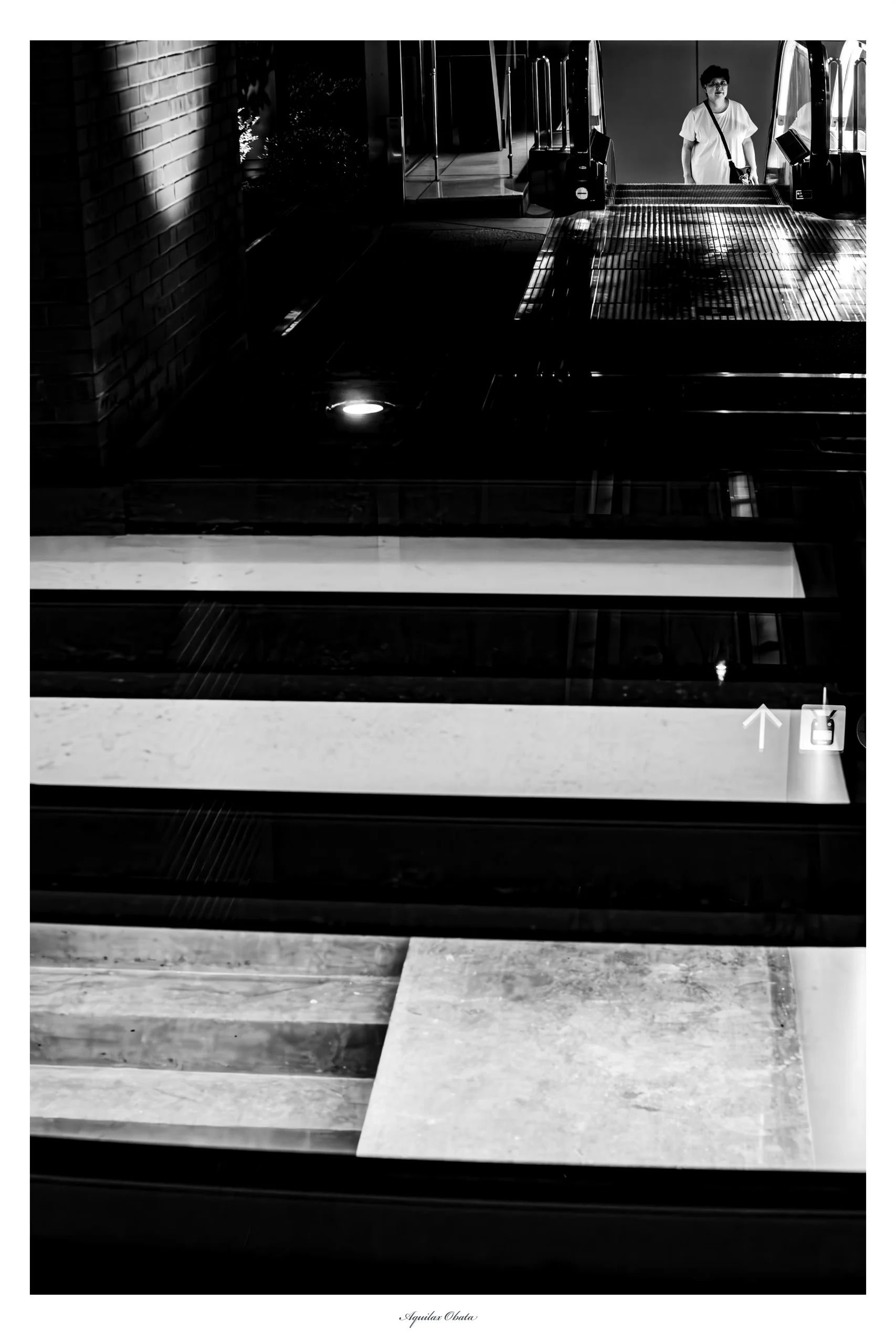
9,July 2024
[Equipment]
📷LUMIX-DC-S1 + LUMIX-S-PRO, 1:1.4/50mm, SS:1/125,f5.6,ISO:5000
はじめに
「モノクローム写真は魂を撮る」
この言葉は1930年代に写真家のアンリ・カルティエ=ブレッソンによって提唱されたと伝えられています。
カルティエ=ブレッソンは、モノクロ写真が被写体の本質や内面を捉えることができると考え、「モノクローム写真は魂を撮る」と表現したのでしょう。
彼は、瞬間を捉えることを「決定的瞬間」と呼び、そうした大切な瞬間をモノクロームで表現することの重要性を説いていました。
私とモノクローム写真との原点
カルティエ=ブレッソンのこの言葉は、モノクロ写真がもつ独特の表現力や魅力を端的に示すものとして、写真界で広く知られるようになりました。この言葉はモノクローム表現を追求する上で、写真家たちの創造性と哲学を反映した重要な言葉として生き続けていると思います。私もまたこの言葉と創造性豊かな想いが込められたカルティエ=ブレッソンの作品に出会ったことが、写真人生の原点にもなりました。
モノクローム写真の魅力について
光と影の美しさを単色で捉える
モノクローム写真とは、色彩の代わりに濃淡のあるグレー階調を用いた芸術表現です。光と影の美しさを単色で捉えることにより、見る人の意識を被写体の形、質感、感情に焼き付け、ドラマチックで時間を超えた効果を生み出すことが可能になります。
つまり色を取り除くことでシーンの本質的な要素を際立たせ、焦点を絞り込めるからです。
カメラの設定を変えてコントラストやトーンレンジを変化させ、純白から純黒までのダイナミックレンジを生かすことにより、見る人に印象的な視覚的インパクトを与えることになります。照明や被写体によって、ノスタルジー、ミステリー、エレガンス、ドラマティックな表現が実現できます。
人間の内面世界を写し撮る
また、被写体のコントラスト、質感、形、光を際立たせることによって、人間の内面世界を写し撮ることに近づくことができます。
現実を単純化・抽象化したり、特定の側面や感情を単純化することによって、逆に複雑な核心に迫ることになるわけです。
しかしそれは決して簡単なことではありません。色彩を削ぎ落とした分、光、影、形態、テクスチャーといった核心的な要素を統合する想像力と発想が必要だからです。それらの要素と経験値が化学反応を起こした時、人々の心を揺さぶる作品が生まれるのではないかと考えています。
モノクローム写真によって伝えたいこと
芸術表現の手段として大きな可能性を秘めているモノクローム写真です。
では自分はなにを伝えるべきか?次にこのことについて考えてみようと思います。
感情と内面性について
「魂をとらえる」という言葉は、モノクローム写真には、被写体の内面的な感情生活、感情、より深い心理的現実を明らかにするユニークな能力があることを示唆しています。写真家はこのメディアを使って、人間の経験のより親密で微妙な側面を描写することができます。
このことは人間という被写体を離れ、建造物や都市の一角を撮影する場合でも同様です。
写真家にとって掛け替えのない思い出や経験がある建物や街角などを撮影する場合、全く未知の建物を撮影する場合とは異なり、画角の撮り方や撮影する時間帯にも拘りがあるはずです。つまり写真家はその建造物を通して自己の人生を、時の流れを超えて映し込んでいることになります。
時空を超えた普遍性ということ
今、「時の流れを超えて」という言葉を使いました。色彩を排除することでモノクロームのイメージは時間や場所の特定を超越し、さらには時代を超越した感覚を生み出すことさえ可能です。映画のエンドロールで流れることの多いモノクロームによるフラッシュバック表現、これはモノクローム表現による効果の一例です。見る者は長いストーリーを反芻し、作品の普遍的で原型的な要素に触れ、感動をより深いものとして脳裏に刻むことにもなります。
シンプルさと本質
抽象的な概念
モノクローム写真は基本的には現実をニュートラルグレーの濃淡で表現します。つまり世界を忠実に再現したものではなく、同じ色の異なる色調で異なる色を単純化して表現する抽象的な表現手法だということです。
ここで重要なことは、色の雑念を取り除くことで被写体の本質を明らかにするということです。
私は最近になってようやく、被写体の本質を撮影するという意味が理解できるようになってきました。
ディティールと全体
被写体の本質を引き出すために基本的な形、質感、全体的な構造に注意を凝らす。
これは大切な条件です。しかし往々にして形や質感、ディティール要素に注意が向いてしまう。
例えば都会はコンクリートとガラス、さらに多くの人間で充満しています。都会は見方によっては無個性とも思われるすべての要素に満ちています。
だが本当にそうだろうか?
よく見ると♾️とも言える現実世界のすべての要素は個性で満ち溢れています。だがそれらのディティールを重視していると、明確な全体像を見失いかねない。外界の世界は写真家の内面のカオスを凌駕し、はるかに豊穣でダイナミックなことに気付かされます。
嗅ぎ分ける
このディティールと全体像という、相反する要素をどのように調和させ、切り取りその本質をシンプルに見せるべきか。
現実世界の構成要素から引き算をして、限られたフレーム(ファインダー)内でどのように主張させるか。
単純化によって本質を掴み出したい。一瞬の行為は動物的に、しかし冷静な判断として「シャッターを切る」という行為につながるわけです。
光と影、白と黒によってイメージが’定着できるか否かを嗅ぎ分ける必要があると考えています。
引き算の勇気
きわめて近しい関係であればそれぞれが内面が抱えているカオスを共有することは可能かもしれません。しかしカオスを共有しての日常はやがて重荷に陥りやすい。何を言おうとしているのかというと、自己の内面世界を押し出した写真表現は、熱烈なファンを獲得できるかもしれないが、長く共感を得ることは難しくなる。
ドロドロとした私小説世界に、見る側は疲れてしまうのです。乱暴な言い方をあえてすると、これは足し算の世界になる。先ほどのディティールの集合体というはこの足し算という言葉に置き換えることも可能でしょう。
例えば日没の広い景色を捉えるか、足元に長く伸びた影を捉えるか。
光と影-モノクローム表現という観点に立った場合、私は迷わず後者にレンズを向けます。
内面世界のカオス=足し算としての表現に陥りやすい。
目の前の光景を可能な限り主題を明確化し、エッジを鮮明にして光と影でしシンプルに上書きする。ジョルジョ・デ・キリコの絵画に見られるようなシュールレアリズム的な美学に学ぶことこそ、モノクローム写真としての仕事ということになるのではないでしょうか?
まとめ
芸術性と詩学
モノクローム写真の本質についていくつかの考えを述べてきました。
それらをまとめてみると私にとってモノクローム写真は単なる記録ではなく、人間の経験に基づいたより詩的で芸術的な探求のための媒体として活用できるのではないかと考え、願っています。
概してモノクロームの美学は単に物理的な表現にとどまりません。人間が持っている、感動するという特質を伝えるのに適しているように思えてならないのです。
写真家たちはモノクロームの美学をとおして、人間とは何かということについて思いを巡らせ、より深い真理を呼び起こすためのひとつの手段として取り組んでいるのではないだろうか?と考えています。
